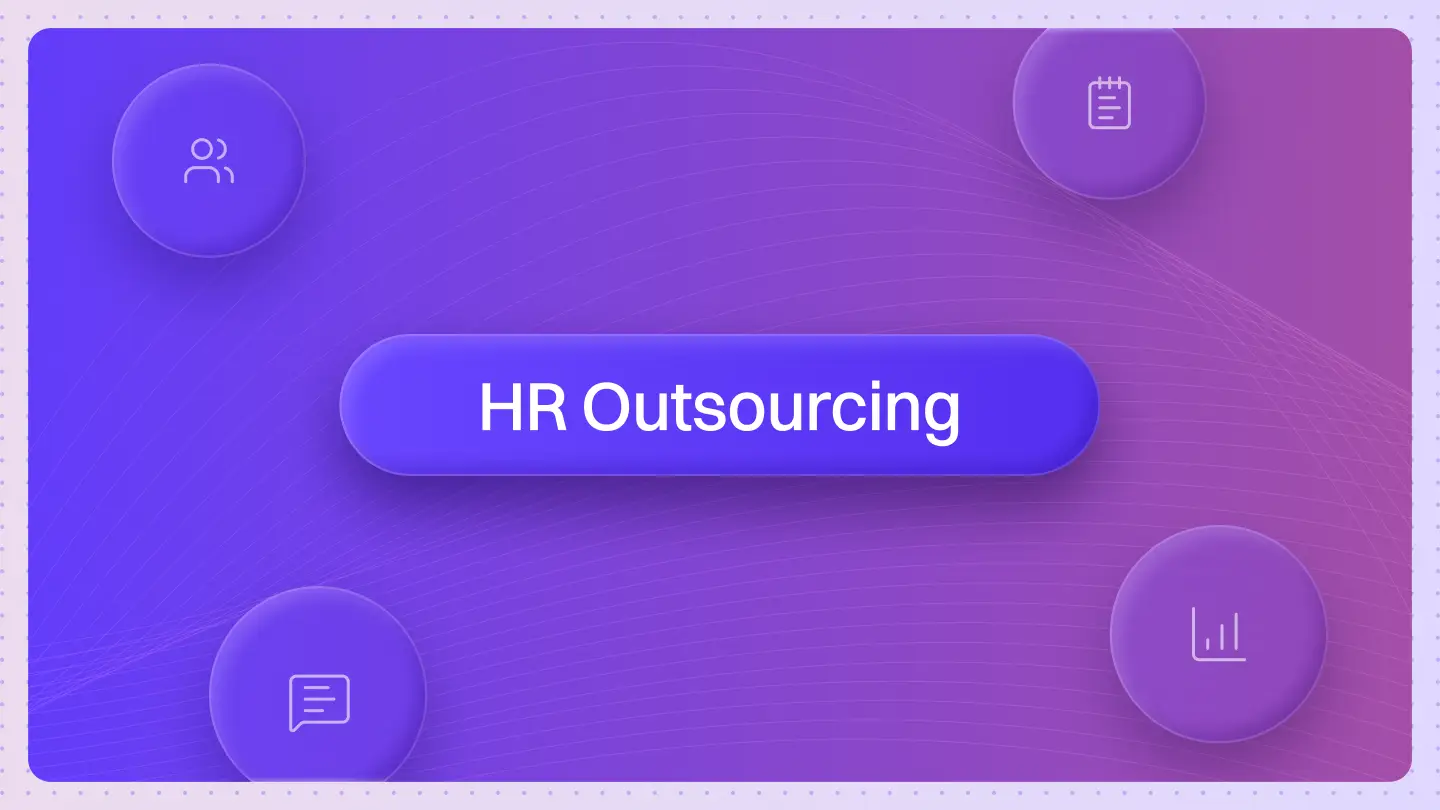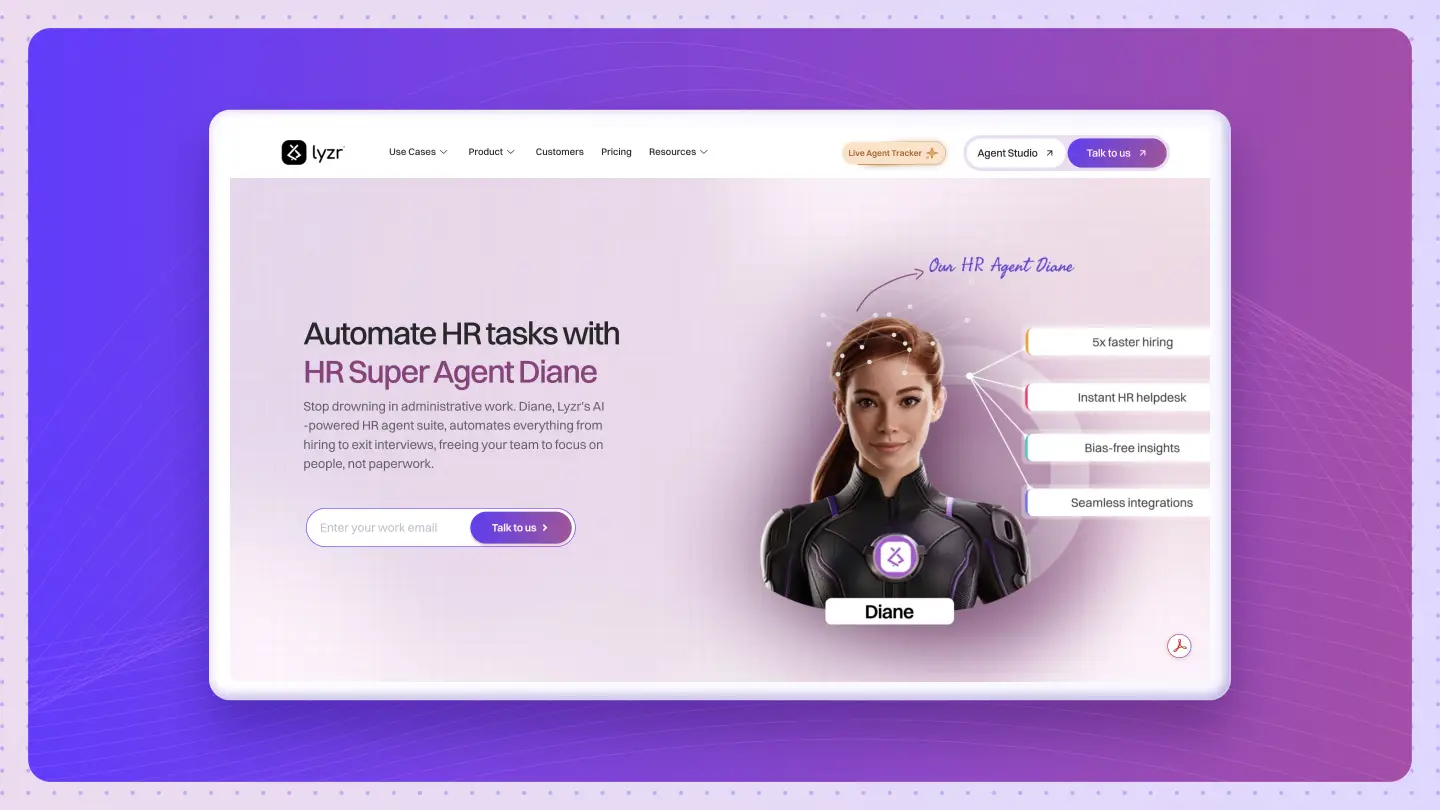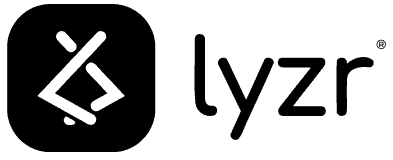AI-Powered SDR Agents are sophisticated software applications that leverage artificial intelligence, particularly machine learning and natural language processing, to automate and enhance many top-of-funnel sales activities, These digital agents work autonomously to identify leads, craft personalized outreach, engage prospects, qualify their interest, and even schedule meetings, effectively functioning as a force multiplier for human sales teams, . By handling repetitive and time-consuming tasks, AI-Powered SDR Agents enable human SDRs to focus on higher-value interactions and strategic responsibilities.
AI-Powered SDR Agents represent a significant leap forward from traditional sales automation tools. They are not merely script-followers; instead, they use machine learning (ML) algorithms to learn from interactions, analyze customer intent, and adapt their communication strategies in real-time. Core technologies underpinning these agents include:
1. Natural Language Processing (NLP)
This enables AI-Powered SDR Agents to understand, interpret, and generate human-like text for emails, messages, and even chatbot interactions. They can comprehend prospect inquiries, field objections, and carry on contextually relevant conversations.
2. Machine Learning (ML)
ML algorithms allow these agents to improve their performance over time by learning from data. This includes refining lead scoring models, optimizing outreach messaging, and identifying patterns that indicate a prospect’s readiness to buy.
3. Automation
At their core, AI-Powered SDR Agents automate tasks such as sending personalized emails at scale, scheduling follow-ups, and updating CRM systems, .
These agents can operate 24/7, ensuring no lead is missed and that engagement happens at the optimal time. Companies like Lyzr are developing solutions such as Jazon, an autonomous AI SDR, which utilizes multi-agent coordination to cover the entire outreach process.
How Do AI-Powered SDR Agents Revolutionize Sales Outreach?
AI-Powered SDR Agents transform the sales development process by bringing intelligence and efficiency to each stage:
1. Lead Discovery and Research
These agents can sift through vast databases and online sources to identify potential customers matching an ideal customer profile (ICP). They can also research leads by scraping web and social media pages for personalization insights.
2. Personalized Outreach Crafting
Moving beyond generic templates, AI-Powered SDR Agents can craft hyper-personalized emails and messages based on the gathered data about each prospect, significantly increasing engagement rates.
3. Automated Engagement and Follow-ups
They manage multi-channel outreach campaigns, ensuring timely and consistent follow-ups without manual intervention. This persistence is key in nurturing leads effectively.
4. Intelligent Lead Qualification
By analyzing responses and engagement patterns, AI-Powered SDR Agents can qualify leads, determining their sales readiness and identifying those who are prime for human interaction. This often involves understanding intent and answering preliminary questions.
5. Seamless Appointment Scheduling
Once a prospect shows sufficient interest, the AI SDR can automatically book meetings directly into a human sales representative’s calendar, streamlining the handoff process.
Core Capabilities of AI-Powered SDR Agents
Modern AI-Powered SDR Agents come equipped with a suite of capabilities designed to optimize sales funnels:
1. Automated and Scalable Prospecting
They can search databases of millions of B2B prospects and initiate contact at a scale unachievable by human teams alone.
2. Hyper-Personalization at Scale
Utilizing data points from various sources, AI-Powered SDR Agents deliver personalized messages that resonate with individual prospects, even when dealing with large volumes. This can be further enhanced with technologies like Retrieval-Augmented Generation (RAG) for crafting highly contextual messages.
3. 24/7 Lead Engagement and Nurturing
Unlike human SDRs, AI agents operate around the clock, engaging leads as they come in and nurturing them consistently, regardless of time zones or business hours.
4. Advanced Lead Scoring and Prioritization
AI algorithms analyze lead behavior and profile data to score and prioritize leads, ensuring sales teams focus on the most promising opportunities.
5. Data Enrichment and CRM Integration
AI-Powered SDR Agents automatically update CRM systems with every interaction, enriching lead profiles with new information and context, providing a comprehensive view for the sales team.
6. Multi-channel Communication
Many advanced AI-Powered SDR Agents can engage prospects across various channels, including email, LinkedIn, and sometimes even SMS or chat, providing a cohesive experience.
The Tangible Benefits: Why Enterprises are Adopting AI-Powered SDR Agents
The adoption of AI-Powered SDR Agents is accelerating as businesses recognize their substantial benefits:
1. Significant Boost in Sales Pipeline
By automating top-of-funnel activities, these agents generate a higher volume of qualified leads, directly contributing to a healthier sales pipeline.
2. Enhanced Efficiency and Productivity
They handle repetitive, time-consuming tasks, freeing up human SDRs to concentrate on activities requiring a human touch, like building relationships and closing deals. Salesforce notes that reps using AI see higher win rates.
3. Reduced Operational Costs
An AI-Powered SDR Agent can perform the work of multiple human SDRs at a fraction of the cost, leading to significant savings in hiring, training, and salaries. This makes them a Cost-Optimized AI Agent solution.
4. Improved Lead Quality and Conversion Rates
Through intelligent qualification and consistent follow-up, AI SDRs ensure that sales reps engage with warmer, more sales-ready leads, improving conversion rates.
5. Consistent Brand Messaging and Follow-up
AI ensures that every lead receives a consistent experience, with no missed follow-ups or variations in messaging, which can happen with human teams.
6. Empowering Human SDRs for Strategic Tasks
By taking over monotonous tasks, AI-Powered SDR Agents allow human sales professionals to focus on complex negotiations, strategic account planning, and fostering deeper client relationships.
AI-Powered SDR Agents vs. Traditional SDRs: A Synergistic Approach
It’s crucial to understand that AI-Powered SDR Agents are not intended to replace human SDRs but to augment their capabilities. The ideal scenario involves a collaborative model where AI handles volume and repetition, while humans manage nuance and relationships.
| Feature | AI-Powered SDR Agent | Human SDR | Synergistic Outcome |
|---|---|---|---|
| Task Focus | Repetitive, high-volume tasks (e.g., initial outreach, data entry, basic qualification) | Complex, nuanced tasks (e.g., relationship building, advanced objection handling, closing) | Optimized workflow, higher overall productivity |
| Scalability | Virtually limitless; can engage thousands of leads simultaneously | Limited by individual capacity | Ability to scale outreach efforts rapidly |
| Operating Hours | 24/7 operation without fatigue | Standard business hours, susceptible to fatigue | Continuous lead engagement and faster response times |
| Consistency | Highly consistent in messaging and follow-up | Variable, can be affected by mood or workload | Uniform brand experience for all prospects |
| Data Analysis | Can process and analyze vast amounts of data for insights | Relies on experience, intuition, and available tools | Data-driven strategies combined with human expertise |
| Cost Efficiency | Lower operational cost per lead handled | Higher cost per lead, includes salary and benefits | Reduced cost of sales development |
| Adaptability | Learns from data but within programmed boundaries; may require Fine-Tuning vs Prompt Engineering for new scenarios | Highly adaptable, empathetic, can handle novel situations | AI handles known patterns, humans manage exceptions |
This collaborative approach allows sales teams to leverage the strengths of both AI and human intelligence, leading to more efficient and effective sales operations. Many organizations are exploring how these Autonomous Agents can be integrated into broader workflows.
Implementing AI-Powered SDR Agents: A Strategic Guide
Successfully integrating AI-Powered SDR Agents into your sales process requires careful planning and execution.
| Step | Description | Key Consideration |
|---|---|---|
| 1. Define Clear Objectives | Establish specific, measurable goals for your AI SDR. What do you want it to achieve (e.g., number of meetings booked, leads qualified)? | Align AI SDR goals with overall sales strategy and KPIs. |
| 2. Choose the Right Platform | Select an AI SDR solution that fits your needs, considering features, integration capabilities, and scalability. Platforms like Salesforce Agentforce offer robust options. | Look for features like Lyzr’s Jazon’s AgentMesh technology for multi-agent coordination or local cloud security for privacy. |
| 3. Data Preparation & Integration | Ensure your CRM data is clean and well-structured. Plan for seamless integration between the AI SDR and your existing sales stack (CRM, email tools). | Quality data is crucial for AI performance; poor data can lead to poor results. Consider using Vector Indexing in Agents for efficient data retrieval. |
| 4. Customization & Training | Configure the AI SDR’s persona, messaging, and operational parameters to align with your brand and target audience. Some platforms offer low-code customization. | Invest time in “training” the AI with your specific playbooks and ideal customer profiles. |
| 5. Testing & Monitoring | Conduct thorough testing before full deployment. Continuously monitor the AI SDR’s performance, responses, and overall effectiveness. | Regularly assess its interactions to ensure it’s performing as expected and making necessary adjustments. |
| 6. Human Handoff Protocols | Define clear processes for when and how the AI SDR should hand off qualified leads or complex queries to human sales reps. | Ensure a smooth transition to maintain a positive prospect experience. |
| 7. Legal and Ethical Review | Ensure compliance with data privacy regulations (e.g., GDPR, CCPA) and ethical AI practices in communication. | Transparency with prospects about interacting with an AI can be important. |
Choosing Your AI-Powered SDR Solution: Key Features to Evaluate
When selecting an AI-Powered SDR Agent for your enterprise, consider these crucial features:
| Feature | Description | Enterprise Benefit |
|---|---|---|
| Autonomous Operation | Ability to execute tasks end-to-end without constant human intervention, from lead research to meeting booking. | Maximizes efficiency and allows human teams to focus on high-value activities that truly need a human touch. |
| Personalization Engine | Advanced capabilities to tailor messages based on deep lead research, behavioral data, and company insights. | Higher engagement rates, improved response quality, and stronger initial connections with potential clients. |
| CRM & System Integration | Seamless, deep integration with existing CRM (e.g., Salesforce), marketing automation, and other sales tools. | Unified data, streamlined workflows, real-time updates, and a single source of truth for sales activities. |
| Learning & Adaptability | Machine learning models that allow the AI to learn from interactions, improve its responses, and adapt to changing market dynamics. | Continuously improving performance, better objection handling over time, and relevance in evolving sales landscapes. |
| Customization & Control | Ability to customize the AI’s persona, tone, outreach strategies, and operational guardrails using natural language or low-code tools. | Alignment with brand voice, specific campaign goals, and industry-specific compliance requirements. |
| Analytics & Reporting | Robust dashboards and reporting features that provide insights into AI SDR performance, campaign effectiveness, and lead engagement metrics. | Data-driven decision-making, ability to A/B test strategies, and clear visibility into ROI. |
| Security & Compliance | Features ensuring data privacy, secure data handling (e.g., local cloud options), and adherence to industry regulations. | Protection of sensitive customer and company data, building trust, and avoiding legal repercussions. |
Solutions like those offered by Lyzr AI often focus on providing robust, enterprise-grade features that cater to complex sales environments.
The Future Trajectory of AI-Powered SDR Agents
The field of AI-Powered SDR Agents is rapidly evolving. Industry analysts predict a significant increase in the use of generative AI in B2B sales; Gartner, for instance, suggested that by 2028, 60% of B2B sales activities could be powered by such technologies, up from less than 5% in 2023. Future trends likely include:
1. Deeper Conversational AI
More sophisticated NLP capabilities will enable even more natural, human-like conversations and complex objection handling.
2. Enhanced Predictive Analytics
AI SDRs will become better at predicting which leads are most likely to convert and when to engage them, leveraging AI insights from platforms like Google Cloud AI.
3. Proactive Strategy Adjustment
Future agents may autonomously adjust outreach strategies based on real-time campaign performance and market feedback.
4. Multi-Agent Orchestration
More complex systems, like Lyzr’s AgentMesh, will involve multiple specialized AI agents working in concert, potentially managed through advanced Orchestration frameworks.
5. Integration with Advanced AI Models
Technologies like Agentic RAG will provide AI SDRs with deeper knowledge bases for more informed and context-aware interactions.
6. Ethical AI and Transparency
Growing emphasis on ethical AI development and transparency in AI-human interactions, as promoted by organizations like OpenAI.
The continuous development in AI, as seen with contributions from entities like Meta AI and Hugging Face, will undoubtedly fuel further innovation in AI-Powered SDR Agents.
Frequently Asked Questions (FAQs)
Here are answers to some common questions.
1. What are AI-Powered SDR Agents?
AI-Powered SDR Agents are AI tools that automate sales tasks like lead finding, outreach, and scheduling, acting like digital sales development reps.
2. How do AI-Powered SDR Agents differ from basic automation?
They use AI for intelligent decision-making, personalization, and learning, unlike rule-based automation. Basic automation follows pre-set rules, while AI-Powered SDR Agents adapt.
3. Can AI SDRs replace human SDRs entirely?
No, they are designed to augment human SDRs by handling repetitive tasks, allowing humans to focus on complex interactions and relationship building.
4. What tools or platforms can help implement AI-Powered SDR Agents?
Platforms like Salesforce Agentforce, Artisan’s Ava, and Lyzr’s Jazon offer AI SDR capabilities; Lyzr provides SDKs for building custom enterprise AI agents.
5. What are the key tradeoffs to consider when working with AI-Powered SDR Agents?
Key tradeoffs include the initial setup time, cost of advanced platforms, the need for quality data, and ensuring ethical AI use and proper human oversight.
6. How are enterprises typically applying AI-Powered SDR Agents to solve real-world problems?
Enterprises use them to scale lead generation, reduce response times, personalize outreach for thousands of leads, and improve overall sales efficiency. For instance, VTT Technical Research Centre of Finland used Agentforce to qualify thousands of inbound leads.
7. How much do AI-Powered SDR Agents typically cost?
Costs vary widely based on features and scale, from monthly subscriptions for simpler tools to significant investments for enterprise-grade, customizable platforms.
8. What kind of data is needed to effectively train an AI-Powered SDR Agent?
Effective training requires access to historical sales data, ideal customer profiles, successful outreach examples, and CRM information on lead interactions.
Conclusion
AI-Powered SDR Agents are reshaping the landscape of sales development by bringing unprecedented efficiency, scalability, and intelligence to top-of-funnel activities. They empower sales teams to connect with more prospects meaningfully, automate laborious tasks, and ultimately drive more revenue. As AI technology continues its rapid advancement, the capabilities and adoption of AI-Powered SDR Agents will only grow, making them an indispensable asset for modern, data-driven sales organizations looking to gain a competitive edge.




